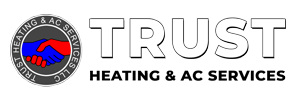Heating and cooling systems are essential for maintaining indoor comfort throughout the year. However, one of the most common issues homeowners face with these systems is leakage. Whether it’s a refrigerant leak in your air conditioning unit or a water leak from your heating system, such problems can lead to decreased efficiency, higher energy bills, and even costly repairs if left unchecked. Here’s a detailed look at heating and cooling system leakage, its causes, effects, and solutions.
Types of Leakage in Heating and Cooling Systems
- Refrigerant Leaks Refrigerant is the substance responsible for cooling in air conditioners and heat pumps. Leaks in refrigerant lines can compromise the system’s cooling efficiency and environmental compliance.
- Water Leaks Water leakage can occur in both heating and cooling systems. In cooling systems, condensation forms during the cooling process, which can leak if there’s an issue with the drainage system. For heating systems, water leaks often stem from boilers, radiators, or pipework.
- Air Duct Leaks While not liquid, air leaks in ductwork are another form of “leakage” that can result in significant energy loss and uneven heating or cooling.
Causes of Heating and Cooling System Leakage
- Refrigerant Leaks
- Corroded or Damaged Coils: Over time, the evaporator or condenser coils can corrode, causing leaks.
- Poor Installation: Improper installation of refrigerant lines can lead to loose connections and leakage.
- Wear and Tear: Aging systems are more prone to refrigerant leaks due to deteriorating components.
- Water Leaks
- Clogged Drain Lines: A blocked condensate drain line prevents water from draining properly, causing it to back up and leak.
- Dirty Air Filters: When filters are clogged, airflow is restricted, leading to ice buildup on the evaporator coil, which melts and causes water to overflow.
- Damaged Heat Exchangers or Boilers: In heating systems, leaks can occur due to cracks in the heat exchanger or aging boilers.
- Air Duct Leaks
- Poorly Sealed Ductwork: Gaps and holes in ducts allow air to escape, reducing the system’s efficiency.
- Aging Duct Materials: Over time, duct materials can deteriorate, leading to leaks.
Effects of Leakage in Heating and Cooling Systems
- Reduced Efficiency
Leaks can force your system to work harder to achieve the desired temperature, leading to increased energy consumption and higher utility bills.
- Poor Indoor Air Quality
Refrigerant leaks release harmful chemicals into the air, while water leaks can promote mold and mildew growth, affecting your home’s air quality.
- Uneven Heating or Cooling
Air duct leaks can lead to inconsistent temperatures in different parts of your home.
- System Damage
Prolonged leakage can cause damage to critical components, such as compressors, heat exchangers, or ductwork, resulting in costly repairs or replacements.
- Environmental Impact
Refrigerant leaks can release greenhouse gases into the atmosphere, contributing to global warming.
How to Detect a Leak
- Refrigerant Leaks
- Insufficient cooling or heating.
- Ice buildup on evaporator coils.
- Hissing or bubbling sounds near refrigerant lines.
- Rising energy bills without a clear cause.
- Water Leaks
- Puddles of water near the indoor unit.
- Water stains on walls or ceilings.
- Musty odors indicating mold or mildew.
- Air Duct Leaks
- Hot or cold spots in your home.
- Whistling sounds from ducts.
- Increased dust and debris in the air.
Preventing and Fixing Heating and Cooling System Leakage
- Regular Maintenance
Schedule professional HVAC maintenance at least twice a year. Technicians can inspect your system, clean components, and identify potential issues before they worsen.
- Replace Air Filters
Changing air filters every 1-3 months helps maintain proper airflow, reducing the likelihood of water leaks caused by frozen coils.
- Seal Ductwork
Use metal tape or mastic sealant to fix gaps and holes in ductwork. A professional can also conduct a pressure test to identify leaks.
- Clean Drain Lines
Flush the condensate drain line periodically to prevent clogs. Adding a small amount of vinegar can help remove buildup.
- Address Corrosion
Use protective coatings to prevent corrosion of refrigerant lines and coils. If corrosion has already caused a leak, professional repair or replacement is necessary.
- Use a Leak Detector
Refrigerant leak detectors can help identify leaks in the system. For water leaks, installing a water sensor near your HVAC unit can alert you to problems early.
- Professional Repair and Replacement
For significant leaks, such as refrigerant or boiler leaks, it’s crucial to hire a licensed HVAC technician. They can:
- Repair or replace damaged components.
- Recharge refrigerant to the correct levels.
- Recommend long-term solutions, such as upgrading to a newer, more efficient system.
When to Call a Professional
While some minor issues, like unclogging a drain line, can be handled by homeowners, more complex problems require expert attention. Call a professional if you notice:
- Persistent leaks despite maintenance.
- A sudden drop in system performance.
- Strange sounds or smells coming from your HVAC unit.
- Visible damage to components, such as rusted coils or cracked ducts.
Conclusion
Leakage in heating and cooling systems is a common but manageable problem. By understanding the causes and effects of leaks, as well as taking proactive steps to maintain your HVAC system, you can avoid costly repairs and ensure your system operates efficiently. Regular maintenance, prompt repairs, and professional assistance are key to preventing leakage and keeping your home comfortable year-round.
If you suspect a leak in your heating or cooling system, don’t wait—address the issue promptly to protect your home, health, and wallet.

